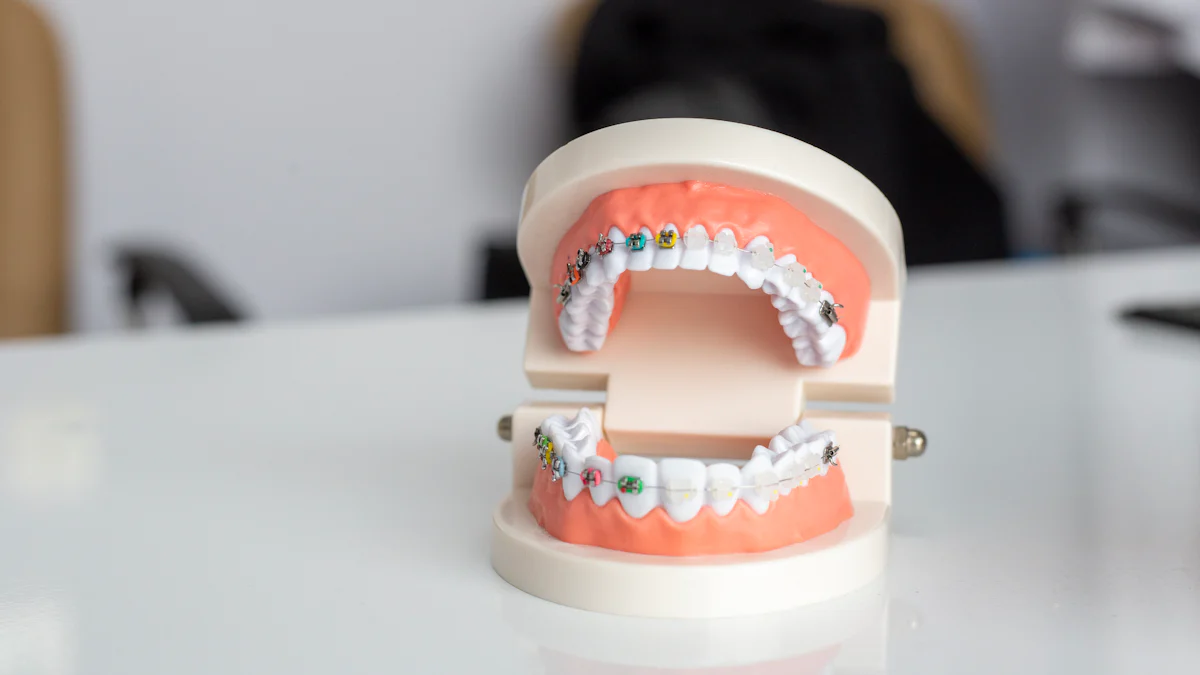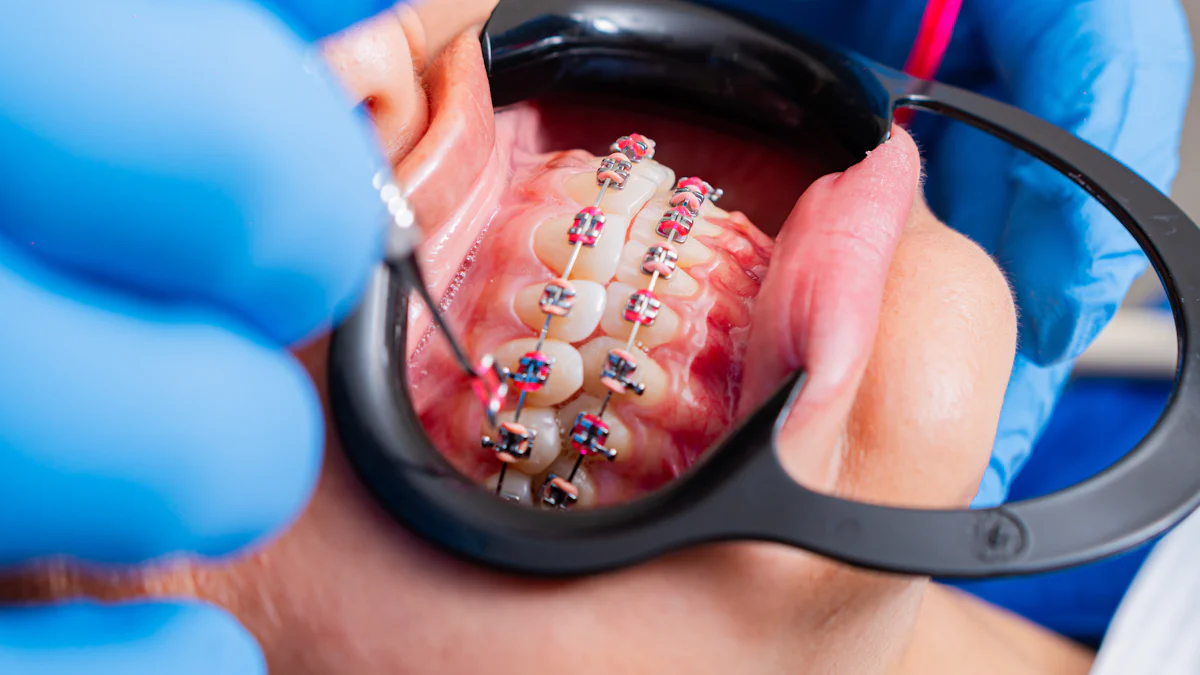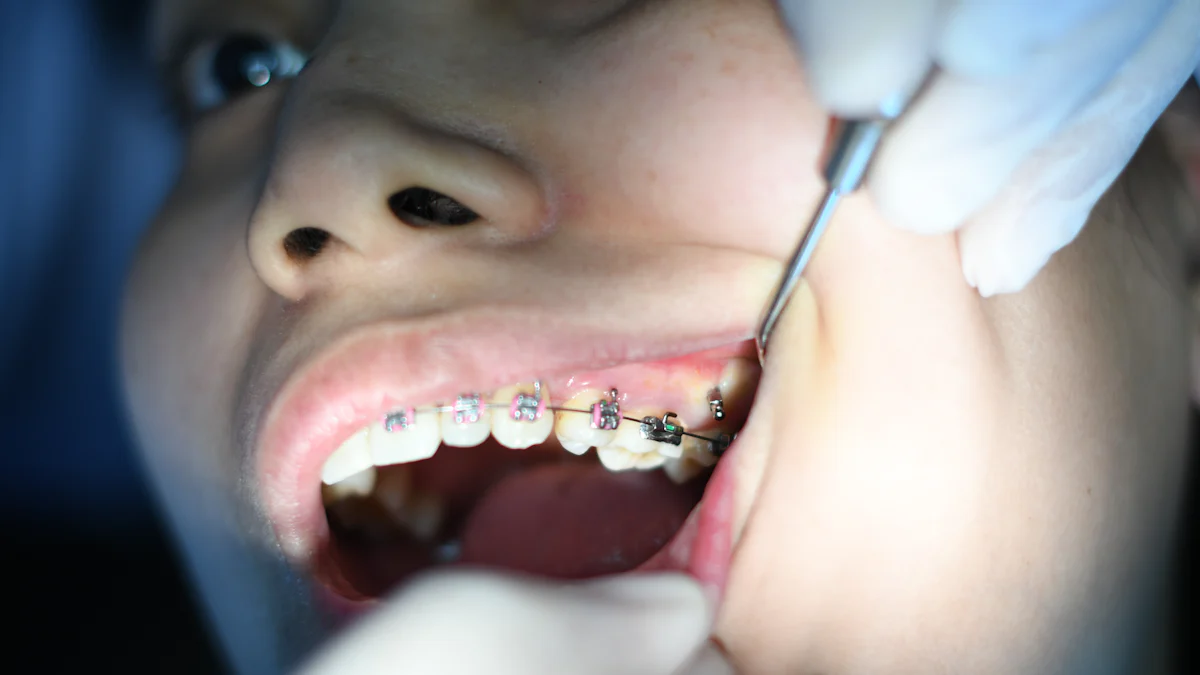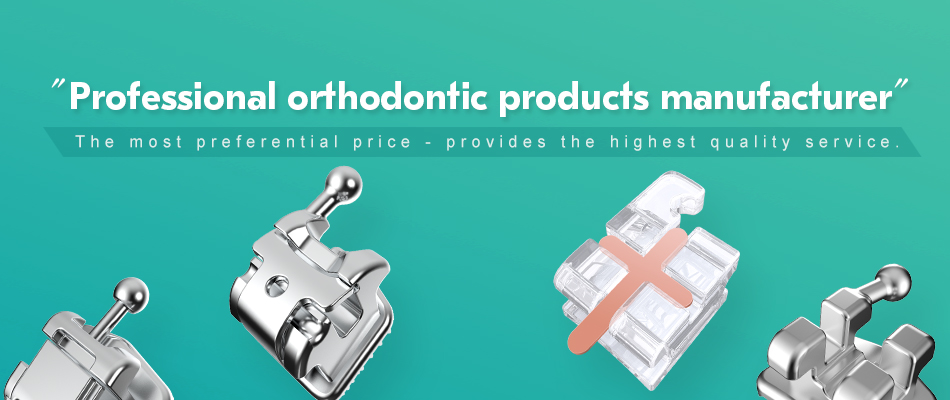
Have you ever wondered how braces can straighten teeth without all the extra hassle? Self-ligating brackets might be the answer. These brackets hold the archwire in place using a built-in mechanism instead of elastic ties. They apply steady pressure to move your teeth efficiently. Options like Self Ligating Brackets – Active – MS1 make the process smoother and more comfortable.
Key Takeaways
- Self-ligating brackets have a sliding clip to hold the wire. This lowers friction and helps teeth move faster and easier.
- These brackets can make treatment quicker and need fewer visits. This makes it easier and more convenient for patients.
- They are comfortable and easier to clean but not for tough cases. They can also cost more at the start.
How Self Ligating Brackets – Active – MS1 Work

Built-in sliding mechanism
Self-ligating brackets use a clever built-in sliding mechanism to hold the archwire in place. Instead of relying on elastic bands or metal ties, these brackets have a small clip or door that secures the wire. This design allows the wire to move more freely as your teeth shift into position. You’ll notice that this system reduces friction, which means your teeth can move more efficiently. With options like Self Ligating Brackets – Active – MS1, the process feels smoother and less restrictive.
Differences from traditional braces
You might wonder how self-ligating brackets differ from traditional braces. The biggest difference is the absence of elastic ties. Traditional braces use these ties to hold the wire, but they can create more friction and require frequent adjustments. Self-ligating brackets, on the other hand, are designed to be low-maintenance. They also tend to look more discreet, which many people find appealing. If you’re looking for a modern alternative to traditional braces, Self Ligating Brackets – Active – MS1 might be a great choice.
Types of self-ligating brackets (passive vs. active)
There are two main types of self-ligating brackets: passive and active. Passive brackets have a looser clip, allowing the wire to slide more freely. This type works well during the early stages of treatment. Active brackets, like Self Ligating Brackets – Active – MS1, apply more pressure to the wire, making them ideal for precise tooth movement. Your orthodontist will choose the type that best suits your needs.
Benefits of Self Ligating Brackets

Reduced treatment time
Who doesn’t want to finish their orthodontic treatment faster? Self-ligating brackets can help you achieve that. These brackets reduce friction between the wire and the bracket, allowing your teeth to move more efficiently. With less resistance, your treatment progresses faster compared to traditional braces. If you’re using options like Self Ligating Brackets – Active – MS1, you might notice that your teeth shift into place more quickly. This means you could spend less time wearing braces and more time enjoying your new smile.
Fewer orthodontic appointments
Let’s face it—frequent trips to the orthodontist can be a hassle. Self-ligating brackets make your life easier by requiring fewer adjustments. Since they don’t use elastic ties, there’s no need for regular replacements. The built-in mechanism keeps the wire secure and working effectively for longer periods. You’ll still need to visit your orthodontist, but the appointments will likely be shorter and less frequent. This gives you more time to focus on your daily activities without worrying about constant check-ups.
Improved comfort and hygiene
Comfort matters when it comes to braces, and self-ligating brackets deliver. Their design reduces pressure on your teeth, making the process less painful. You’ll also appreciate how easy they are to clean. Without elastic ties, there’s less space for food particles and plaque to build up. This makes maintaining good oral hygiene simpler. Options like Self Ligating Brackets – Active – MS1 combine comfort and cleanliness, giving you a better overall experience during your orthodontic journey.
Drawbacks of Self Ligating Brackets
Higher initial cost
When it comes to self-ligating brackets, the first thing you might notice is the price tag. These brackets often cost more upfront compared to traditional braces. Why? Their advanced design and technology make them pricier to produce. If you’re on a tight budget, this could feel like a big hurdle. However, it’s worth considering the long-term benefits, like fewer appointments and potentially shorter treatment time. Still, the higher initial cost might make you think twice before choosing them.
Limited suitability for complex cases
Self-ligating brackets aren’t a one-size-fits-all solution. If your orthodontic needs are more complex, these brackets might not be the best option. For example, cases involving severe misalignment or jaw issues often require the extra control that traditional braces provide. Your orthodontist might recommend a different approach if they feel self-ligating brackets won’t deliver the results you need. It’s always a good idea to ask questions and understand why a specific treatment is suggested for your situation.
Availability and expertise of orthodontists
Not every orthodontist specializes in self-ligating brackets. These brackets require specific training and expertise to use effectively. Depending on where you live, finding an orthodontist experienced with options like Self Ligating Brackets – Active – MS1 could be a challenge. Even if you find one, their services might come at a premium. Before committing, make sure your orthodontist has the skills and experience to handle this type of treatment.
Tip: Always consult with a qualified orthodontist to weigh the pros and cons of self-ligating brackets for your unique needs.
Self-ligating brackets, like Self Ligating Brackets – Active – MS1, give you a modern way to straighten your teeth. They’re faster, more comfortable, and need fewer appointments. But they’re not perfect for everyone. If you’re unsure, talk to your orthodontist. They’ll help you decide if this option fits your needs and goals.
FAQ
What makes self-ligating brackets different from traditional braces?
Self-ligating brackets don’t use elastic ties. They rely on a built-in clip to hold the wire, reducing friction and making adjustments less frequent.
Are self-ligating brackets painful?
You’ll likely feel less discomfort compared to traditional braces. Their design applies gentler pressure, making the process smoother and more comfortable for most people.
Can self-ligating brackets fix all orthodontic issues?
Not always. They work well for many cases but may not suit severe misalignments or jaw problems. Your orthodontist will guide you on the best option.
Post time: Feb-01-2025


